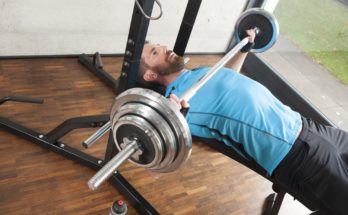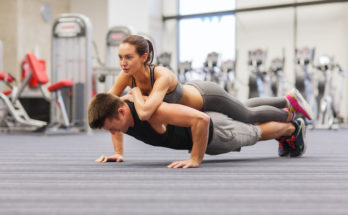About a year ago I promised to write about going beyond the second mile. According to my records I first achieved this on June 6th 2014, reaching 4k in a not very fast time of 1 hour and 50 minutes.
I started writing something last year and never completed it. So I forgot the lessons I meant to learn.
This year I first hit 4k on May 9th at a water temperature of 11C and a time considerably slower than last year’s long distance debut.
This is what I forgot: it’s all about the bladder, stupid.
Also about the neck and the goggles but mainly it’s …. all about the bladder.
Today, having improved my pace a little, I set out to reach 4.8k – and did I get the bladder wrong.
Honestly, last year I picked up some good tips for dealing with this problem. I haven’t forgotten them – just didn’t take them seriously.
Here’s one simple tip. You may need to take more breaks than you would expect based on your stamina and swimming rhythm. You may need a longish break of half a minute or more to try to deal with the problem – the bladder problem. Even better learn to take care of the problem on the move – but does this really work? So today I ended up taking breaks at 3.2k, 3.6k, 4k and at 4.4k I gave up.
A second tip. Avoid imbibing mouthfuls of water at the beginning of the swim. It can be hard to remember this – it’s easy to forget in the shock of cold water or just the euphoria of hitting the open water. And minimise intake of water during the swim – even if it tastes nice and cool and fresh.
The best advice I heard last year – and I cannot remember who gave it so please stand up and take credit – was this. Two hours before the swim, drink a glass of water. One hour before the swim, drink a glass of water. Just before the swim, empty the bladder. It can work quite well. But not so well when you roll out of bed at 7.45 and are in the water at 9.15am. That’s only a 90 minute gap.
I think I also need to remember the following. No alcohol the night before. No tea or coffee in the morning – and this might apply to fizzy drinks.
With all this discomfort, you might ask why? I could stick at 2 miles. That’s more than far enough to keep fit and fluent. Isn’t it easer to get a boat? Maybe. But nothing compares with the experience of being in the water and drifting five miles down a river in one direction, under your own steam. Then there is the sublime feeling – just when you think you are kilometres past your comfort zone – of finding you are moving unthinkingly, just enjoying the splashing of the water, the rays of the sun striking the water from some distant cloud, a water rat’s view of the banks.
What about these other problems? If you’re wearing a wetsuit, repeated motion leads to chafing of the neck. You deal with it by smearing Vaseline or some similar substance on the neck. It’s just something that needs to be remembered.
The goggles. Ah, the goggles. Goggle disasters can happen at any distance. Earlier this week, on a much shorter swim, both my swimming caps came off. Until now I’ve always put the goggle straps over the swimming caps, reasoning it would help keep them in place. Now I realise the opposite – the caps will work the goggles loose. So the caps are now going over the goggles.
There’s also another good way to keep the head comfortable and the goggles in place. It’s unstylish but it works. Use a swimming hood, which loops over the chin and also gives some protection to the ears.
What else did I plan to mention last year? Nutrition – well, eating actually. Don’t assume you need so many calories. In fact over-eating can have unpleasant consequences. I had a large meal 24 hours before the Dart 10k last year and paid for it with nausea and worse.
Minor injuries, failing muscles etc – I have no professional advice on this, just a little bit of success in working around this. If your swimming style is rigid, you may struggle with minor injuries. If you enjoy the water – and roll with it – and are flexible and a little bit leisurely – you may find you can live with small discomforts.
Here’s what happened to me: during the Dart 10k I injured my right arm. I’m pretty certain it came from thrashing my way through the second set of waves that rolled into the swimmers. Following the Dart I couldn’t lift myself on my right arm in the water. This forced me to change the way I sight (keep my direction), learning to lift my head rather than my body – and also to lift on my left arm.
It may have healed over the winter – but there’s now a weakness on my right arm. I’m left-handed so the right was already the weaker arm. For a while I thought that this year I’d never get beyond the second mile. Then I worked out a solution.
As a left-hander, I naturally turn to the left to breathe. As it happens, I breathe both sides. There are many advantages and you get to see the sights on both sides – but I’m still more comfortable breathing on the left. And I noticed this was placing the most strain on my right arm – when it performs a long down-stroke as I turn to breathe to the left.
So I’ve developed a routine to relieve the pressure, a ten stroke routine. It involves one breath to the left and two to the right together with two sequences of not breathing (or rather exhaling) for two strokes and just one of not breathing for three strokes. The result: my strong, fit left arm does two deep down-strokes in a cycle for every one by my weakened right arm. I still get enough breath, my right arm is coping and my pace has picked up a little.
The thing is – you’d struggle to do a long sequence like that in a swimming pool. Well, I would. It’s about 10m long. That’s one of the many beauties of outdoor swimming.
There’s only one problem with the new pattern: it’s mighty uncomfortable when your bladder’s full.
Other postings on outdoor swimming




